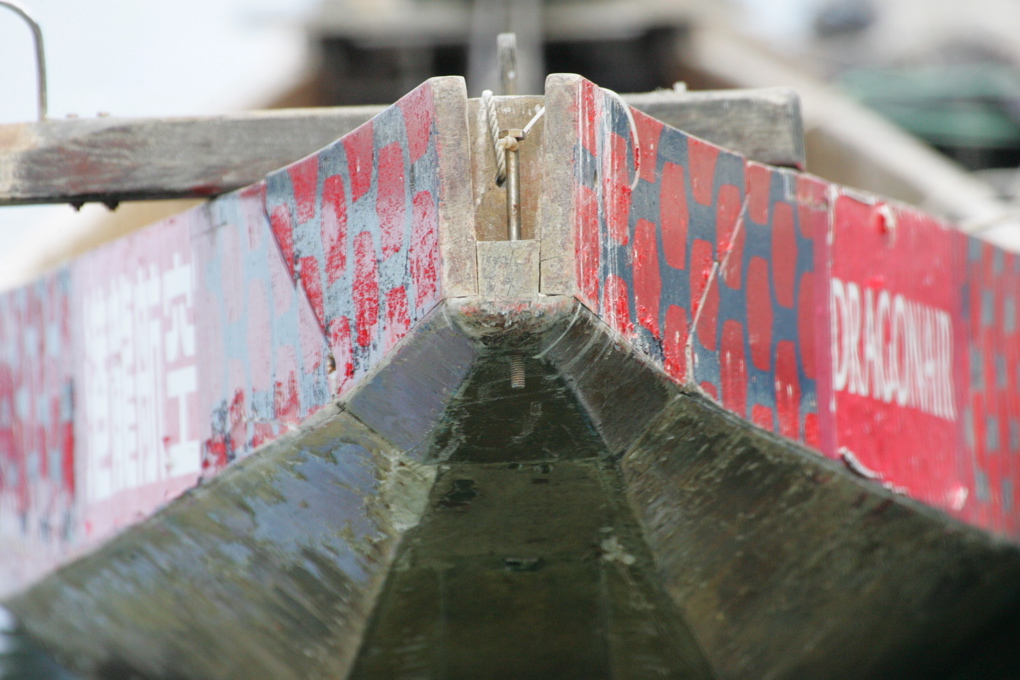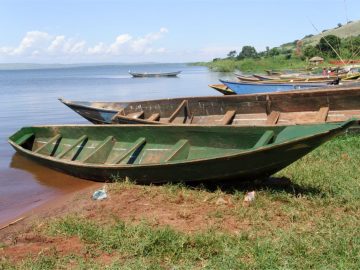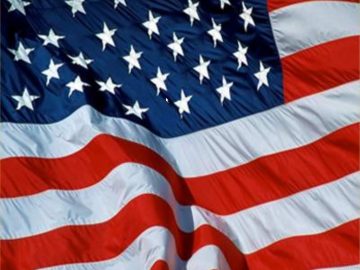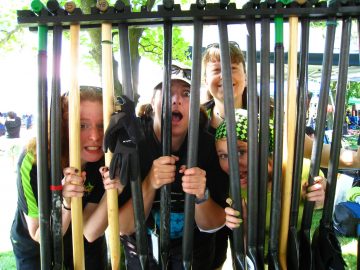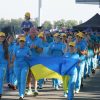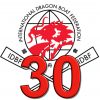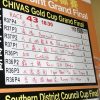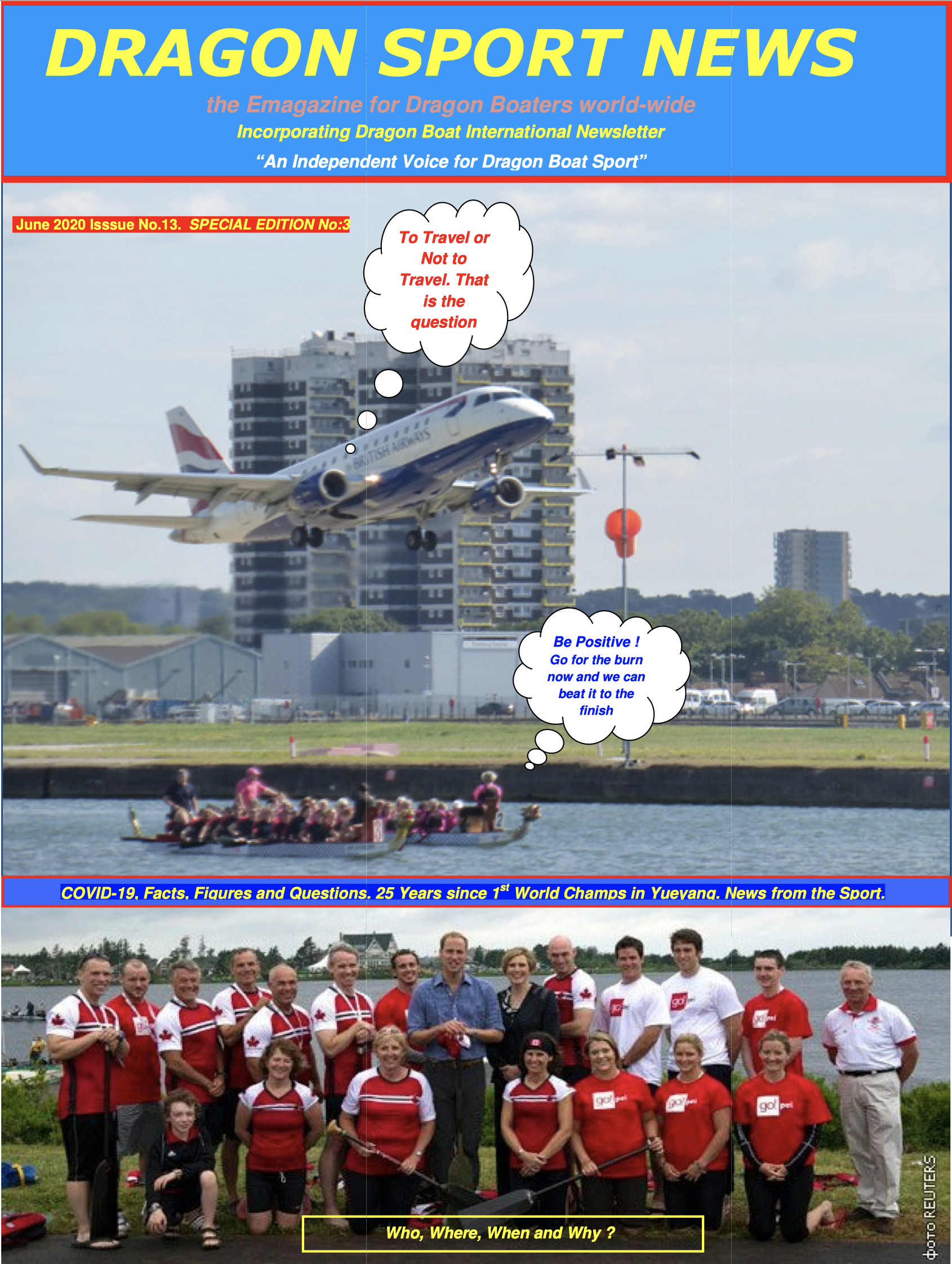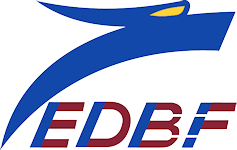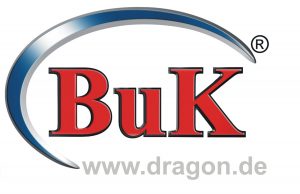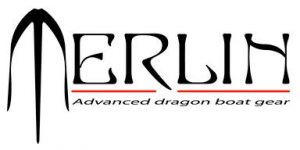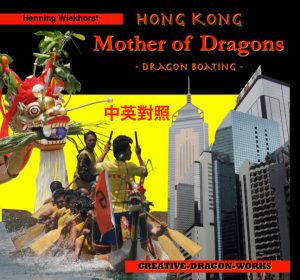Please note: This article is as of 2008!
By the editors of Dragon Boat World International with Mike Haslam in the lead.
What do you get when you take Jolly Old England, add in Wales, Ireland and Scotland then subtract a bit of Ireland? The United Kingdom of Great Britain and Northern Ireland, or the United Kingdom (UK) for short.
With roots that date back before the birth of Dragon Boating, the British Isles have a long and notable history. Modern civilization would not exist in its present form if not for the UK. We can thank the Brits for the Magna Carta. Sir Isaac Newton and William Shakespeare are Englishmen who forever changed science and the arts.
It was an Englishman who invented the steam engine that sparked the great Industrial Revolution. And where would we all be today without the sandwich and, of course, the second most popular sport in the world… cricket!
Although Dragon Boat Racing did not get its start in the UK, the sport has definitely benefited from the UK’s popular embrace. First, let’s go back to the beginning…
When The Dragons Came …

The Beginnings:
In 1980 the Hong Kong Tourist Association (HKTA) sent three Dragon Boats to the London Chinese Festival on the river Thames for an exhibition paddle in order to promote Chinese Culture and tourism.
Some paddlers from the canoe clubs on the Thames took part and told a guy named Mike Haslam about these funny and colorful boats. At that time Mike was the Chairman of the British Canoe Racing Committee and responsible for organizing in Nottingham the forthcoming 1981 Canoe & Kayak Racing World Championships of the International Canoe Federation (ICF).
Now the problem with Canoe Racing is that it is not spectacular enough to attract the much needed media attention that Mike wanted. He was looking for some other activities to put on the water to create more interest in the World Championships.
He had only seen a picture of the dragon boats, which he liked very much, and being convinced by what he was told by the Canoe Clubs in London who had raced the boats, he decided to solve the problem of getting the 40 ft long and two-ton heavy vessels transported to Nottingham from London in time to display them at the Championships. Once they were there, why not race them?
To get people paddling the boats he sent out a press-release and to his surprise some 16 or 17 people wanted to form crews and race the boats and they all showed up! They didn’t really know what to do and Mike told them just to get in the boat, grab a paddle and hit the drum.Without any knowledge about the tradition and culture of dragon boating, teams were formed from canoeists and rowers and so on and a series of dragon boat races took place during the lunch breaks at the World Championships.
TV broadcasters, who heard about the new and strange boats contacted Mike and wanted to report about the boats being raced. Mike asked them not to forget the Canoe World Championships – packed full of Olympic Champions from all over the world but the media were more interested in the Dragon Boats! Mike recognized that there something different about this sport, the drawing power of dragon boat racing which was so colorful, easy to do and people packed !
After the Championships, in his report to the ICF, Mike pointed out that Dragon Boating would be something worth looking at and developing as a new discipline of canoe sport. His report was politely ignored and so he sent the boats to a Museum in Exeter who were looking for traditional boats to exhibit and Mike went to Germany for two years in his real job with the British Army.

Development of Dragon Boating:
When he came back to Nottingham in 1985, Mike worked with the London-based Hong Kong Tourist Association’s European Director Kent Hayden-Sadler, to move the three wooden boats back from Exeter and decided to see what he could do with dragon boating in the UK. With a couple of crews worth of people having fun and paddling the Dragons in races they set up during Canoe Racing Regattas in Nottingham, he started to develop the sport by forming the Dragon Boat Racing Club of Great Britain.
Having not heard anything more from the ICF for almost three years, Mike asked again if there would be any interest in going ahead to develop Dragon Boat Sport under the ICF as a canoeing discipline.
The answer was a clear“No” because the ICF President said that whilst Dragon Boating was obviously a water craft, paddled in the style of a canoe, it was not Competitive Canoeing and in the opinion of the ICF Board, at that time, would never be considered as such. However, Mike was told that if he wanted to develop Dragon Boating as its own sport, then the ICF would give advice and a helping hand if requested to do so.
For a while, Mike went his own way for a while racing the wooden boats when he could and then moved the boats back to London when Mike Thomas asked if he could use the boats in a development programme for kids in the London Docklands. In 1987, a friend of Mike’s from the Rowing Association, Olympic Medalist Chris Ballieu, told Mike that he had a problem with the attractiveness of his rowing events, since this sport is not really a spectacular one – just like Canoe Racing.

Mike was asked if something could be done with the dragon boats. As a result the Dragons were moved to London’s Serpentine Lake in Hyde Park and were raced in the Westminster Serpentine Regatta as the first National Championships of the newly formed British Dragon Boat Racing Association (BDA). The British Amateur Rowing Association (ARA) had close ties with the one in Hong Kong, where the boats originally came from and the ARA had been sending crews to the annual Hong Kong Races for about 5 years.
The ARA and Mike made a deal that the winners of the 1st BDA National Championships at the Serpentine Regatta would receive the invitation to the Hong Kong Races from 1987 onwards and so the first Championships were a contest between crews from Rowing Clubs and Canoe Clubs with a few novice Dragon Boat crews thrown in. Not surprisingly, a BDA canoe club crew won that first Championships and the trip to Hong Kong.
Still not knowing very much about the Dragon Boat traditions, culture, racing rules or any other background to Dragon Boating,Mike then traveled to Hong Kong with the BDA Crew and with the help of a very supportive HKTA. In Hong Kong, Mike met the manager in charge of promoting Dragon Boating to oversea countries as a Tourist Marketing Campaign, one Mason Hung, who is today the Senior Vice President of the IDBF.

Mike also met people like Robert Wilson from the HK Rowing Association (much later he became the first President of the IDBF) and Philip Lai, the Chairman of the HK Fishermen Association and now an IDBF President of Honour. Those people helped the HKTA introduce basic rules for racing, which was necessary to make the Fishermen’s traditional sport suitable for introduction to other countries and cultures.
Having now learned about the Dragons backgrounds and realizing that Hong Kong was a City actually spending money on a sport as part of a worldwide effort to promote tourism, Mike returned to the UK deep in thought and inspired by what he had seen in Hong Kong. Mike knew that the sport couldn’t be developed with only three boats available in the UK. And even worse, the teakwood boats were tremendously heavy, long and difficult to transport and difficult to get in and out of the water too.

So Mike’s thoughts turned to making fibre-glass Dragon Boats but building them as a ‘split boat’ by cutting the hull into two halves, so that they would fit onto a small trailer for ease of transportation and then put back together again before racing them. All this meant he had to find a boat maker who could make a mold, which involves quite some cost, and who then could make the actual boat.
In response to an article from Mike about the developing sport, a boat builder friend of Mike’s, Chris Hare, responded that he would be willing to make the boats if Mike could find the finance. Mike spoke to Kent Hayden-Sadler at the HKTA’s London Office and he raised the funds for the project from Hong Kong and helped obtain HKTA’s permission to copy one of the original wooden boats already in the UK.
Thus it was that the Hong Kong style of wooden dragon boat became the plug for the mould from which came the first UK fibre-glass boats and subsequently the base specification for the IDBF Standard Racing Dragon Boat used today worldwide.
The intention was always to also preserve the spectacular and colorful design of the boat and the ancient traditions of Dragon Boating. The step of making fibre-glass boats wasn’t a significant technical change and the development of the IDBF Spec Dragon Boat since has maintained the traditional hull design of the Hong Kong Boat.
There were also fibre-glass boats existing with the Fishermen in Hong Kong at this time. But cutting a Dragon, the most superior being in Chinese culture, was a major break against tradition and you won’t find such a boat in use in China or Hong Kong. Even an old Dragon Boat that cannot be used any more will never ever be cut into pieces for easy disposal. Instead the boat will be burned, which symbolizes the Dragon going back to heaven within the smoke of the fire.

To raise money for the Sport Aid Charity and to promote Dragon Boating to a wider audience, Mike Haslam was invited by the BBC to show the first fibre-glass boat on National Television. He had recruited a crew of paratroopers from the Army to race the boat from London to Nottingham – 140 miles by canal and river and they too would be in the TV show. Everything was ready for the live programme. Everything that is, except the boat, which arrived at the studio less than 30 minutes before broadcasting, direct from the factory and unchecked or tested. With the boat finally in the studio Mike discovered that the tail and nose cones for fitting the Dragon’s Head and Tail to the boat Hull had not been made. When the original wooden boat was collected from storage at the Rowing Club nobody had told the boat maker about the nose and tail cones. Since he was only given the boat hull he didn’t know anything different.
For the TV launch of this first boat, duct tape was finally used to attach the Dragon’s head and tail to the boat. The mold was remade in the aftermath and the head and tail pieces added.
To hold races and develop the sport doesn’t work well if you only have one boat, you need at least two or more. Again a question of money, which finally leads to the question of getting sponsorship, a topic known by everybody involved in promoting the sport even today.
An important sponsor for a second boat was Ken Lo, who was opening a new restaurant in London under the name of “Ken Lo’s Memories of China.” For him, being associated with Dragon Boating was a perfect match and marketing tool. From then on a kind of snowball effect took place in that more races were organized, new people were introduced to the sport, more publicity was gained and new boat sponsors came as a result of the publicity of dragon boat pictures appearing in newspapers and on local TV. Within a short period of time the BDA had a fleet of eight or nine boats and was organizing a National Championships Series of races all around the UK, with the finals on the Serpentine in London and sponsorship coming from both the HKTA and Cathay Pacific Airways. The National Championship winners won the sponsored annual trip to the Hong Kong International Races.
This first race series in the UK were called Charity Races, as money was always raised for Charity at them. Today we would know them as Festival Races, with people participating for the pure sake of fun rather than sportive competition. The BDA crews who wanted to take their Dragon Boating more seriously and develop it as a sport soon wanted to have a race series more focused on the racing itself. And so the serious crews formed themselves into Dragon Boat Clubs and brought their own Dragon Boats from the BDA fleet or new boats from the BDA boat builder. The BDA also started to organize Club based competitions as well as Charity Races.

From this trend in the mid 1990’s the British National League evolved and from that time the BDA has concentrated on Sport Racing and the commercial event organizers who came from within the BDA Membership took on the “Charity Racing,” or festival, side of Dragon Boating in the UK.
Today’s UK Dragon Boating:
As we can see from the above, today’s UK Dragon Boat community consists of two streams of Dragon Boating -Sport Racing and Charity Festival Racing.
The world’s first formally established Dragon Boat Association is the BDA, which is the UK Sports Council recognized governing body for Dragon Boat Racing in the UK. The BDA is also a Founder Member of both the EDBF and the IDBF and staged the 1999 World Dragon Boat Championships, in Nottingham.
In the past the BDA had been responsible for organizing every single Dragon Boat Race in the UK. But today, the BDA focuses more on the development and promotion of Sport Racing and has around 21 established Dragon Boat Clubs, fielding on average 40 plus crews in the BDA National Championships. BDA Individual Membership shows around 3000 paddlers on its date base of which 800 registered for the National League Races last year.
Please don’t mix up crews and clubs in the UK since there are Clubs running up to five crews.The BDA is also responsible for developing and selecting National Teams in the various categories and classes that are contested at World and European Championships. Like most Countries, the BDA first sent Club Crews in each Racing Class to IDBF Championships but soon switched to selecting National Crews by time trialing individual paddlers from the BDA Clubs, forming National Crews and then training them specifically for a World or European Championships.

This led to the establishment of the British National Training Squad (BNTS) with different Squads for Premier, Senior and Junior paddlers and appointed National Coaches. The different Squad Crews then train together at BNTS training weekends throughout the year.The result of this system has seen a huge rise in the standard of British National Crews. The pride of the GB Team is the Women’s Squad, winning medals at every World and European Championship since its inception in 1997. The Premier Open Squad has also won Championships medals, as have the GB Junior and Senior Squads.
The engine room of the BDA is for sure the National League, which consists of nine League Races during the season from April to September over 200m and 500m race distances. The League races have a typical participation level of 18-20 crews and up to 600 spectators but the jewel in the BDA Crown is the National Championships Grand Finals which conclude the Racing season. The National Champs are held after the National League and also include the 1000m race distance, with over 40 crews on average racing over two full days of competition.

The BDA Club Crews that make up the Sport Racing scene have been established for quite a few years with two Clubs – Amathus from Liverpool in the North and Batchworth from Watford in the South – each celebrating their 20th anniversary this year 2008. The big bonus coming from such clubs is the high level of performance that their crews reach through regular competition.
There are many more Charity Races, maybe to 80 or so each year in the UK, attracting upwards of 1,500 crews to take part in Dragon Boating. When you add the number of participants, mainly young people taking part in recreational Dragon Boating in activity centres and on adventure holidays, then a total estimated 60,000 people are annually engaged in Dragon Boating, throughout the UK.
Most of the Charity Crews probably compete only once a year in their local Charity Races and therefore the BDA Sport Racing programme doesn’t really reach them.Whilst the high competitive levels of the National League are positive for the sport, it can be a disincentive for any novice crew from the Charity Festival Races who might want to compete more seriously. It is understandable that a novice crew might think that they haven’t got a chance to successfully compete at the level found in the National League.

The BDA solution to this was to split the League into two Divisions – Premier and Standard, with the Premier Division being restricted to the top 12 crews and the remainder going to the Standard Division, thus making the step up from the Charity Races less competitively difficult. Promotion and relegation between the Divisions is not automatic and depends on an assessment of whether or not the Crews concerned in the Standard Division will be able to compete effectively in the Premier Division.
Despite this attempt to encourage crews to join the National League very few Charity Crews have made the step from Festival to Sport Racing. The main problem here is that most Charity events are organized directly by the Charities directly who hire one of the commercial event companies to run the actual races on the day.

The Charities themselves recruit the crews for their own events and are very reluctant to give any details of the competing crews to the BDA. They are focused on using Dragon Boating as a fundraising activity for their own Charity and there is nothing wrong at all about that. But unfortunately, they are not interested in developing the sport of Dragon Boat Racing and nor are the commercial organizers who are making a good living from the Charity Racing scene and therefore don’t have any real reason to involve themselves in BDA Sport Racing.
When it comes to public awareness of Dragon Boating in the UK the chances are that people hear and know about the sport via the Charity Racing scene and not so much through the National League Races. Has the BDA become isolated from the base of Dragon Boating in the UK, which it gave birth to? To a large extent the answer has to be ‘Yes.’ But how much should it actually concern itself with the ‘fun crews’ in the Charity Races scene?
As a governing body of sport the BDA’s main focus has been on developing Sport Racing and producing GB Teams to compete internationally and rightly so. The BDA is fully aware, however, that it has lost touch with the majority of the Charity crews that race in the UK and wants to build a bridge to the National League for interested Charity crews to cross by having a presence at Charity Races up and down the Country; by organizing ‘come and try it’ sessions in new towns and cities; and by visiting activity centers to encourage them to offer Dragon Boating as an activity.

The draw back with any such thing is that somebody has to organize it and that costs time and money. To be truly effective this would need people working on the projects full time with a dedicated set of Dragon Boats and the BDA does not have the resources to do this without official support and funding. Last year the BDA applied for a special development grant from Sport England of £60,000 to help fund a project to increase participation in the sport by running free introductory sessions to Dragon Boat Racing for schools during the day and the general public in the evening, in ten different cities.
The project was turned down flat as Sport England would not spend money on buying Dragon Boats and they did not think that the project (designed to introduce at least 10,000 people to the sport) would be “value for money.” Unfortunately, the facts of sporting life are that for any really meaningful support two things are needed, public media coverage on a national level and a sport being recognized as an Olympic sport because the vast majority of public funding for sport in the UK (and around the world) goes to the Olympic Sports. Sport Racing in the UK gets very little of the first and none of the second.
Securing funding for the sport at a National level is one very good reason why it is important for the IDBF to gain recognition from the IOC as an Olympic Federation.That is why gaining membership of the General Association of International Sport Federations (GAISF) was so extraordinarily important for the sport, as GAISF Membership is the first step on the road to the Olympic Games.
One sign of building bridges can be found on the BDA’s web site where four event organizers are linked there and proudly promote themselves as BDA certificated partners. So maybe the Charity Crews problem is not as bad as it may look and let’s hope the BDA can make a success of its bridge to the Charity Crews.

Viewed from the point of Sport Racing, the BDA has established arguably the world’s best Dragon Boat League, which has been operating for a number of years now and has developed a solid system of races with stable participation. This for sure is a fine achievement and a very good example of how well a sport can be organized on a National level.
Beside the National League Races and the Charity Events there are a few other dragon boat events taking place in the UK. Best described as Inter-Club competitions, these races are again mainly between BDA Club Crews. The Henley Winter Series is one such event held on the River Thames but maybe a little unsuitable for the Fun Paddlers as the races really are what the name says -winter races in the freezing cold.
The Great River Race each year, which is 20 miles down the River Thames, also attracts many Dragon Boat crews each year but is not a BDA run event nor is it for Charity. All events, no matter from which side of the sport, are held on all kinds of fresh water venues and from time to time in harbours and river estuaries. The exception to this is the Cross Channel event, highlighted last year when Prince William’s girlfriend joined one of the crews and then withdrew because of all the publicity. Prince William himself raced Dragon Boats during his time at Eton College and once made the Semi-Finals of the inter house races.
UK Dragon Boat Initiatives
A very positive initiative by the BDA is setting up a youth development program for Dragon Boating through the National League by encouraging schools to take part in Sport Racing. More and more organizers are starting to run youth races that appear in some the Charity Races.
While in some other countries like Canada and the US Breast Cancer Survivor (BCS) teams are a significant movement and factor within the sport Dragon Boating, they are not yet established in the UK with only one BCS crew -“Pool of Life” -being formed in 2006 in Liverpool through the Amathus Dragon Boat Club.
Also arising from Amathus are Lin Griesel and Rachel Smith, two fellow Dragon Boaters who recently filled the headlines by crossing the Atlantic in a rowing boat with the aim the raise funds for Brest Cancer Care.

As a conclusion, Dragon Boating as a whole is well established in the UK and continues to grow, albeit slowly in the Sport Racing sector. There is always something to work on, to be fixed or to be improved at all levels in the sport. Life would be so boring if it was any different!
Dragon Boat World International’s many thanks go to the entire British Dragon Boat Racing Association (BDA).Especially to:
-Amathus Dragon Boat Club
-Secklow 100 Dragon Boat Team
-Thames Dragons
-WAM Dragons
Sometimes it was difficult to distinguish from where the information was coming . If we didn’t mention your teams name we sincerly apologize and encourage you to inform us immediately to credit you in the next DBWI-Issue. -The Editors
Visit the website of the BDA



